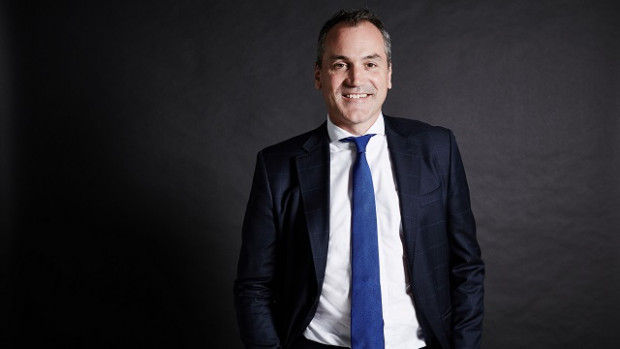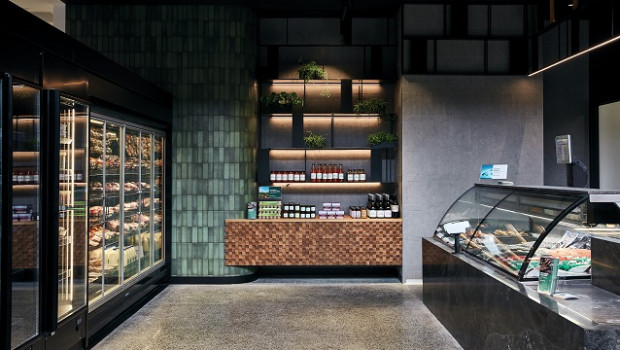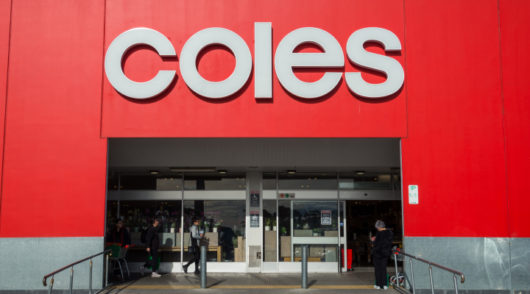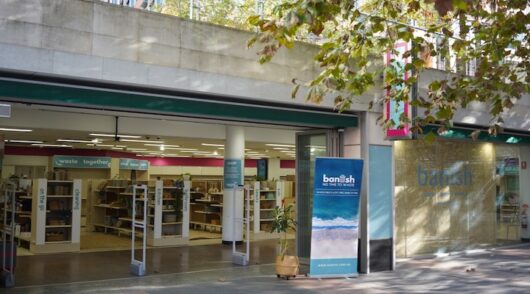
Burwood Brickworks, which opened in a suburb outside Melbourne last month, has been called the world’s most sustainable shopping centre.
It’s the first building in a retail environment to be Living Building Challenge certified, meaning it operates as effectively as a flower – getting all of its energy needs from the sun, using and circulating water, producing no waste or toxicity and looking visually appealing and vibrant.
We caught up with Peri Macdonald, executive general manger of retail at Fraser’s Property, which developed Burwood Brickworks, to discuss the misconceptions about green building design and the rising demand for sustainable spaces from tenants and customers.
Heather McIlvaine: What made you want to develop a shopping centre that would meet the Living Building Challenge requirements?
Peri Macdonald: In terms of the opportunity to pursue Living Building Challenge certification at Burwood Brickworks, the planets aligned.
The 18-hectare site itself was a blank canvas in a convenient location with an established trade area, so we had the chance to pursue something unprecedented in retail. The shopping centre will also be the natural heart of the new residential community being created by Frasers Property Australia’s residential business, so we needed to deliver a community asset that our residents will be proud of.
We also have a mandate to innovate at Frasers Property, given our long history of creating sustainable developments across different sectors.
Finally, we developed a business case that demonstrated that an additional capital investment in sustainable initiatives will be returned, with interest, over the life cycle of the centre, so pursuing Living Building Challenge certification satisfied our commercial objectives too.
HM: What are some of the biggest challenges of building a green shopping centre that you may not have been 100 per cent aware of before you started?
PM: The current planning framework is not equipped to support or encourage innovative developments like Burwood Brickworks. The Living Building Challenge requirement for part of the site to be dedicated to agricultural use, in this case in the form of Australia’s first shopping centre rooftop urban farm, was a case in point.
‘Agriculture’ was not a permitted use under the site’s zoning and therefore had to be argued as an incidental component of the core retail use.
We should have a planning system that supports, encourages and incentivises innovation, rather than one that restricts and challenges any ideas that are outside the norm of what has been done previously. Assessing permit applications within a more reasonable or accelerated timeframe, to incentivise developers to undertake more progressive and aspirational projects like this would be a good start.

HM: In the same vein, what are the biggest misconceptions about the challenges of green buildings that you think should be put to rest?
PM: I’ll draw attention to three misconceptions, though there are many others.
First, that sustainability costs more without those costs being able to be recouped. Second, that sustainability is limited to the built form and installations like solar panels and water tanks. And third, that other stakeholders including tenants and the community don’t care about sustainable development, instead prioritising convenience and affordability.
At Burwood Brickworks, we’ve been able to counter each of these misconceptions.
On the cost front, our business case forecasts that the combined sustainability initiatives will generate a significant return on investment.
This will be achieved through the sale of electricity via an embedded energy network; efficient operating costs; increased penetration within the catchment; expansion of the trade area; increased frequency of visitation and extended dwell times due to the uniqueness and quality of asset, resulting in higher turnover forecasts and higher rentals.
The misconception that sustainability is limited to the built form is another that this and other recent projects have debunked.
Yes, initiatives like solar PV, water re-use and recycling, toxin-free materials and biophilic design are important. But so are social sustainability outcomes, like the community’s involvement and participation in maintaining and enjoying the produce of the rooftop urban farm. Then there are economic sustainability principles to consider, to show that the pursuit of aspirational projects can actually benefit the bottom line.
Finally, the collaboration we enjoyed with our tenants in taking this journey with us highlights the broader recognition and desire among businesses to create and occupy more comfortable, sustainable places.
For instance, the Living Building Challenge requires all shop designs and fitouts to comply with an approved list of materials including energy efficient building fabrics and sustainable materials, while avoiding worst-in-class materials.
This put pressure on costs and programs, but our tenants were up for the challenge and should be commended for elevating their fitouts and operations.

HM: With more retailers like Ikea and Country Road setting ambitious sustainability targets, are you having more conversations with retail tenants about the environmental impact of their stores and the centres they’re in?
PM: Throughout the Burwood Brickworks experience we’ve been fortunate to work with a progressive group of like-minded tenants who, like us, have used the principles of the Living Building Challenge to adapt their business models in order to improve sustainability performance across their operations.
In some cases, the approaches our national tenants have taken at Brickworks are being implemented in other stores in their network, for instance around materials specification choices and waste management.
It’s clear that tenants and customers are increasingly demanding better environmental performance and an elevated sense of social responsibility from developers. Some of the conversations we’ve had with tenants at Burwood Brickworks, we’ve never had before. As a result of this experience, we’re better prepared than ever to have these types of conversations, and we can bring a solutions-focus.
HM: What’s next for Frasers Property in terms of eco-friendly development?
PM: We’ve learned – and shared – plenty of lessons in striving for Living Building Challenge certification and creating the world’s most sustainable retail development.
For our retail business, we have already committed to creating new centres that at a minimum achieve 6-Star Green Star (Design & As Built) certification. But there’s no doubt the lessons we’ve learned at Burwood Brickworks will influence and enhance the environmental, social and economic sustainability outcomes of retail developments we embark on in the future.
Innovations we’ve investigated around the identification of waste streams, the possibilities of biophilic design, materials selection and even stakeholder engagement, to name just a few, will have applications in the design and operation of our future projects.
Burwood Brickworks represents a new line in the sand not just for us, but the industry as a whole. The challenge now, for all of us, is to keep progressing.





